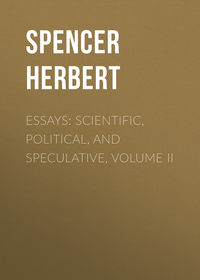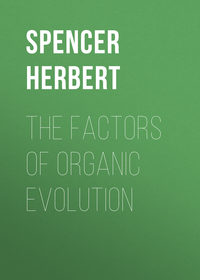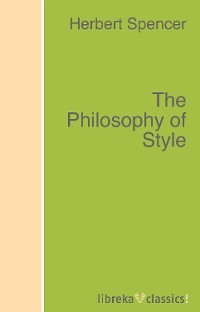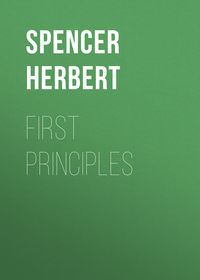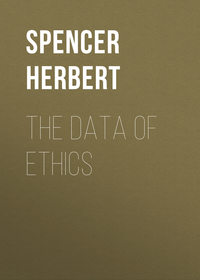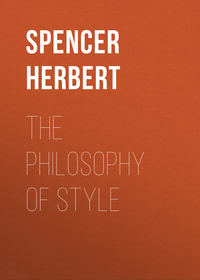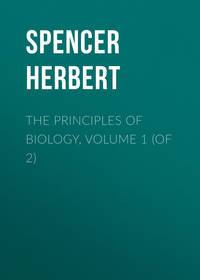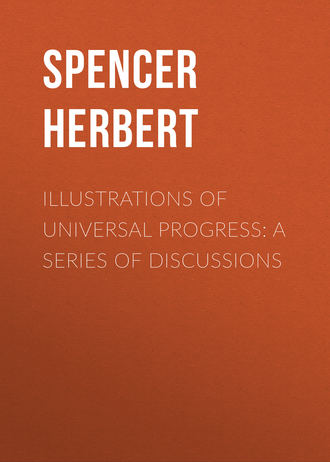 полная версия
полная версияIllustrations of Universal Progress: A Series of Discussions
Suppose that by a series of upheavals, occurring, as they are now known to do, at long intervals, the East Indian Archipelago were to be, step by step, raised into a continent, and a chain of mountains formed along the axis of elevation. By the first of these upheavals, the plants and animals inhabiting Borneo, Sumatra, New Guinea, and the rest, would be subjected to slightly modified sets of conditions. The climate in general would be altered in temperature, in humidity, and in its periodical variations; while the local differences would be multiplied. These modifications would affect, perhaps inappreciably, the entire flora and fauna of the region. The change of level would produce additional modifications: varying in different species, and also in different members of the same species, according to their distance from the axis of elevation. Plants, growing only on the sea-shore in special localities, might become extinct. Others, living only in swamps of a certain humidity, would, if they survived at all, probably undergo visible changes of appearance. While still greater alterations would occur in the plants gradually spreading over the lands newly raised above the sea. The animals and insects living on these modified plants, would themselves be in some degree modified by change of food, as well as by change of climate; and the modification would be more marked where, from the dwindling or disappearance of one kind of plant, an allied kind was eaten. In the lapse of the many generations arising before the next upheaval, the sensible or insensible alterations thus produced in each species would become organized – there would be a more or less complete adaptation to the new conditions. The next upheaval would superinduce further organic changes, implying wider divergences from the primary forms; and so repeatedly.
But now let it be observed that the revolution thus resulting would not be a substitution of a thousand more or less modified species for the thousand original species; but in place of the thousand original species there would arise several thousand species, or varieties, or changed forms. Each species being distributed over an area of some extent, and tending continually to colonize the new area exposed, its different members would be subject to different sets of changes. Plants and animals spreading towards the equator would not be affected in the same way with others spreading from it. Those spreading towards the new shores would undergo changes unlike the changes undergone by those spreading into the mountains. Thus, each original race of organisms, would become the root from which diverged several races differing more or less from it and from each other; and while some of these might subsequently disappear, probably more than one would survive in the next geologic period: the very dispersion itself increasing the chances of survival. Not only would there be certain modifications thus caused by change of physical conditions and food, but also in some cases other modifications caused by change of habit. The fauna of each island, peopling, step by step, the newly-raised tracts, would eventually come in contact with the faunas of other islands; and some members of these other faunas would be unlike any creatures before seen. Herbivores meeting with new beasts of prey, would, in some cases, be led into modes of defence or escape differing from those previously used; and simultaneously the beasts of prey would modify their modes of pursuit and attack. We know that when circumstances demand it, such changes of habit do take place in animals; and we know that if the new habits become the dominant ones, they must eventually in some degree alter the organization.
Observe, now, however, a further consequence. There must arise not simply a tendency towards the differentiation of each race of organisms into several races; but also a tendency to the occasional production of a somewhat higher organism. Taken in the mass these divergent varieties which have been caused by fresh physical conditions and habits of life, will exhibit changes quite indefinite in kind and degree; and changes that do not necessarily constitute an advance. Probably in most cases the modified type will be neither more nor less heterogeneous than the original one. In some cases the habits of life adopted being simpler than before, a less heterogeneous structure will result: there will be a retrogradation. But it must now and then occur, that some division of a species, falling into circumstances which give it rather more complex experiences, and demand actions somewhat more involved, will have certain of its organs further differentiated in proportionately small degrees, – will become slightly more heterogeneous.
Thus, in the natural course of things, there will from time to time arise an increased heterogeneity both of the Earth's flora and fauna, and of individual races included in them. Omitting detailed explanations, and allowing for the qualifications which cannot here be specified, we think it is clear that geological mutations have all along tended to complicate the forms of life, whether regarded separately or collectively. The same causes which have led to the evolution of the Earth's crust from the simple into the complex, have simultaneously led to a parallel evolution of the Life upon its surface. In this case, as in previous ones, we see that the transformation of the homogeneous into the heterogeneous is consequent upon the universal principle, that every active force produces more than one change.
The deduction here drawn from the established truths of geology and the general laws of life, gains immensely in weight on finding it to be in harmony with an induction drawn from direct experience. Just that divergence of many races from one race, which we inferred must have been continually occurring during geologic time, we know to have occurred during the pre-historic and historic periods, in man and domestic animals. And just that multiplication of effects which we concluded must have produced the first, we see has produced the last. Single causes, as famine, pressure of population, war, have periodically led to further dispersions of mankind and of dependent creatures: each such dispersion initiating new modifications, new varieties of type. Whether all the human races be or be not derived from one stock, philology makes it clear that whole groups of races now easily distinguishable from each other, were originally one race, – that the diffusion of one race into different climates and conditions of existence, has produced many modified forms of it.
Similarly with domestic animals. Though in some cases – as that of dogs – community of origin will perhaps be disputed, yet in other cases – as that of the sheep or the cattle of our own country – it will not be questioned that local differences of climate, food, and treatment, have transformed one original breed into numerous breeds now become so far distinct as to produce unstable hybrids. Moreover, through the complications of effects flowing from single causes, we here find, what we before inferred, not only an increase of general heterogeneity, but also of special heterogeneity. While of the divergent divisions and subdivisions of the human race, many have undergone changes not constituting an advance; while in some the type may have degraded; in others it has become decidedly more heterogeneous. The civilized European departs more widely from the vertebrate archetype than does the savage. Thus, both the law and the cause of progress, which, from lack of evidence, can be but hypothetically substantiated in respect of the earlier forms of life on our globe, can be actually substantiated in respect of the latest forms.
If the advance of Man towards greater heterogeneity is traceable to the production of many effects by one cause still more clearly may the advance of Society towards greater heterogeneity be so explained. Consider the growth of an industrial organization. When, as must occasionally happen, some individual of a tribe displays unusual aptitude for making an article of general use – a weapon, for instance – which was before made by each man for himself, there arises a tendency towards the differentiation of that individual into a maker of such weapon. His companions – warriors and hunters all of them, – severally feel the importance of having the best weapons that can be made; and are therefore certain to offer strong inducements to this skilled individual to make weapons for them. He, on the other hand, having not only an unusual faculty, but an unusual liking, for making such weapons (the talent and the desire for any occupation being commonly associated), is predisposed to fulfil these commissions on the offer of an adequate reward: especially as his love of distinction is also gratified. This first specialization of function, once commenced, tends ever to become more decided. On the side of the weapon-maker continued practice gives increased skill – increased superiority to his products: on the side of his clients, cessation of practice entails decreased skill. Thus the influences that determine this division of labour grow stronger in both ways; and the incipient heterogeneity is, on the average of cases, likely to become permanent for that generation, if no longer.
Observe now, however, that this process not only differentiates the social mass into two parts, the one monopolizing, or almost monopolizing, the performance of a certain function, and the other having lost the habit, and in some measure the power, of performing that function; but it tends to imitate other differentiations. The advance we have described implies the introduction of barter, – the maker of weapons has, on each occasion, to be paid in such other articles as he agrees to take in exchange. But he will not habitually take in exchange one kind of article, but many kinds. He does not want mats only, or skins, or fishing gear, but he wants all these; and on each occasion will bargain for the particular things he most needs. What follows? If among the members of the tribe there exist any slight differences of skill in the manufacture of these various things, as there are almost sure to do, the weapon-maker will take from each one the thing which that one excels in making: he will exchange for mats with him whose mats are superior, and will bargain for the fishing gear of whoever has the best. But he who has bartered away his mats or his fishing gear, must make other mats or fishing gear for himself; and in so doing must, in some degree, further develop his aptitude. Thus it results that the small specialities of faculty possessed by various members of the tribe, will tend to grow more decided. If such transactions are from time repeated, these specializations may become appreciable. And whether or not there ensue distinct differentiations of other individuals into makers of particular articles, it is clear that incipient differentiations take place throughout the tribe: the one original cause produces not only the first dual effect, but a number of secondary dual effects, like in kind, but minor in degree. This process, of which traces may be seen among groups of schoolboys, cannot well produce any lasting effects in an unsettled tribe; but where there grows up a fixed and multiplying community, these differentiations become permanent, and increase with each generation. A larger population, involving a greater demand for every commodity, intensifies the functional activity of each specialized person or class; and this renders the specialization more definite where it already exists, and establishes it where it is nascent. By increasing the pressure on the means of subsistence, a larger population again augments these results; seeing that each person is forced more and more to confine himself to that which he can do best, and by which he can gain most. This industrial progress, by aiding future production, opens the way for a further growth of population, which reacts as before: in all which the multiplication of effects is manifest. Presently, under these same stimuli, new occupations arise. Competing workers, ever aiming to produce improved articles, occasionally discover better processes or raw materials. In weapons and cutting tools, the substitution of bronze for stone entails upon him who first makes it a great increase of demand – so great an increase that he presently finds all his time occupied in making the bronze for the articles he sells, and is obliged to depute the fashioning of these to others: and, eventually, the making of bronze, thus gradually differentiated from a pre-existing occupation, becomes an occupation by itself.
But now mark the ramified changes which follow this change. Bronze soon replaces stone, not only in the articles it was first used for, but in many others – in arms, tools, and utensils of various kinds; and so affects the manufacture of these things. Further, it affects the processes which these utensils subserve, and the resulting products – modifies buildings, carvings, dress, personal decorations. Yet again, it sets going sundry manufactures which were before impossible, from lack of a material fit for the requisite tools. And all these changes react on the people – increase their manipulative skill, their intelligence, their comfort, – refine their habits and tastes. Thus the evolution of a homogeneous society into a heterogeneous one, is clearly consequent on the general principle, that many effects are produced by one cause.
Our limits will not allow us to follow out this process in its higher complications: else might we show how the localization of special industries in special parts of a kingdom, as well as the minute subdivision of labour in the making of each commodity, are similarly determined. Or, turning to a somewhat different order of illustrations, we might dwell on the multitudinous changes – material, intellectual, moral, – caused by printing; or the further extensive series of changes wrought by gunpowder. But leaving the intermediate phases of social development, let us take a few illustrations from its most recent and its passing phases. To trace the effects of steam-power, in its manifold applications to mining, navigation, and manufactures of all kinds, would carry us into unmanageable detail. Let us confine ourselves to the latest embodiment of steam-power – the locomotive engine.
This, as the proximate cause of our railway system, has changed the face of the country, the course of trade, and the habits of the people. Consider, first, the complicated sets of changes that precede the making of every railway – the provisional arrangements, the meetings, the registration, the trial section, the parliamentary survey, the lithographed plans, the books of reference, the local deposits and notices, the application to Parliament, the passing Standing-Orders Committee, the first, second, and third readings: each of which brief heads indicates a multiplicity of transactions, and the development of sundry occupations – as those of engineers, surveyors, lithographers, parliamentary agents, share-brokers; and the creation of sundry others – as those of traffic-takers, reference-takers. Consider, next, the yet more marked changes implied in railway construction – the cuttings, embankings, tunnellings, diversions of roads; the building of bridges and stations; the laying down of ballast, sleepers, and rails; the making of engines, tenders, carriages and waggons: which processes, acting upon numerous trades, increase the importation of timber, the quarrying of stone, the manufacture of iron, the mining of coal, the burning of bricks: institute a variety of special manufactures weekly advertised in the Railway Times; and, finally, open the way to sundry new occupations, as those of drivers, stokers, cleaners, plate-layers, &c., &c. And then consider the changes, more numerous and involved still, which railways in action produce on the community at large. The organization of every business is more or less modified: ease of communication makes it better to do directly what was before done by proxy; agencies are established where previously they would not have paid; goods are obtained from remote wholesale houses instead of near retail ones; and commodities are used which distance once rendered inaccessible. Again, the rapidity and small cost of carriage tend to specialize more than ever the industries of different districts – to confine each manufacture to the parts in which, from local advantages, it can be best carried on. Further, the diminished cost of carriage, facilitating distribution, equalizes prices, and also, on the average, lowers prices: thus bringing divers articles within the means of those before unable to buy them, and so increasing their comforts and improving their habits. At the same time the practice of travelling is immensely extended. Classes who never before thought of it, take annual trips to the sea; visit their distant relations; make tours; and so we are benefited in body, feelings, and intellect. Moreover, the more prompt transmission of letters and of news produces further changes – makes the pulse of the nation faster. Yet more, there arises a wide dissemination of cheap literature through railway book-stalls, and of advertisements in railway carriages: both of them aiding ulterior progress.
And all the innumerable changes here briefly indicated are consequent on the invention of the locomotive engine. The social organism has been rendered more heterogeneous in virtue of the many new occupations introduced, and the many old ones further specialized; prices in every place have been altered; each trader has, more or less, modified his way of doing business; and almost every person has been affected in his actions, thoughts, emotions.
Illustrations to the same effect might be indefinitely accumulated. That every influence brought to bear upon society works multiplied effects; and that increase of heterogeneity is due to this multiplication of effects; may be seen in the history of every trade, every custom, every belief. But it is needless to give additional evidence of this. The only further fact demanding notice, is, that we here see still more clearly than ever, the truth before pointed out, that in proportion as the area on which any force expends itself becomes heterogeneous, the results are in a yet higher degree multiplied in number and kind. While among the primitive tribes to whom it was first known, caoutchouc caused but a few changes, among ourselves the changes have been so many and varied that the history of them occupies a volume.4 Upon the small, homogeneous community inhabiting one of the Hebrides, the electric telegraph would produce, were it used, scarcely any results; but in England the results it produces are multitudinous. The comparatively simple organization under which our ancestors lived five centuries ago, could have undergone but few modifications from an event like the recent one at Canton; but now the legislative decision respecting it sets up many hundreds of complex modifications, each of which will be the parent of numerous future ones.
Space permitting, we could willingly have pursued the argument in relation to all the subtler results of civilization. As before, we showed that the law of Progress to which the organic and inorganic worlds conform, is also conformed to by Language, Sculpture, Music, &c.; so might we here show that the cause which we have hitherto found to determine Progress holds in these cases also. We might demonstrate in detail how, in Science, an advance of one division presently advances other divisions – how Astronomy has been immensely forwarded by discoveries in Optics, while other optical discoveries have initiated Microscopic Anatomy, and greatly aided the growth of Physiology – how Chemistry has indirectly increased our knowledge of Electricity, Magnetism, Biology, Geology – how Electricity has reacted on Chemistry and Magnetism, developed our views of Light and Heat, and disclosed sundry laws of nervous action.
In Literature the same truth might be exhibited in the manifold effects of the primitive mystery-play, not only as originating the modern drama, but as affecting through it other kinds of poetry and fiction; or in the still multiplying forms of periodical literature that have descended from the first newspaper, and which have severally acted and reacted on other forms of literature and on each other. The influence which a new school of Painting – as that of the pre-Raffaelites – exercises upon other schools; the hints which all kinds of pictorial art are deriving from Photography; the complex results of new critical doctrines, as those of Mr. Ruskin, might severally be dwelt upon as displaying the like multiplication of effects. But it would needlessly tax the reader's patience to pursue, in their many ramifications, these various changes: here become so involved and subtle as to be followed with some difficulty.
Without further evidence, we venture to think our case is made out. The imperfections of statement which brevity has necessitated, do not, we believe, militate against the propositions laid down. The qualifications here and there demanded would not, if made, affect the inferences. Though in one instance, where sufficient evidence is not attainable, we have been unable to show that the law of Progress applies; yet there is high probability that the same generalization holds which holds throughout the rest of creation. Though, in tracing the genesis of Progress, we have frequently spoken of complex causes as if they were simple ones; it still remains true that such causes are far less complex than their results. Detailed criticisms cannot affect our main position. Endless facts go to show that every kind of progress is from the homogeneous to the heterogeneous; and that it is so because each change is followed by many changes. And it is significant that where the facts are most accessible and abundant, there are these truths most manifest.
However, to avoid committing ourselves to more than is yet proved, we must be content with saying that such are the law and the cause of all progress that is known to us. Should the Nebular Hypothesis ever be established, then it will become manifest that the Universe at large, like every organism, was once homogeneous; that as a whole, and in every detail, it has unceasingly advanced towards greater heterogeneity; and that its heterogeneity is still increasing. It will be seen that as in each event of to-day, so from the beginning, the decomposition of every expended force into several forces has been perpetually producing a higher complication; that the increase of heterogeneity so brought about is still going on, and must continue to go on; and that thus Progress is not an accident, not a thing within human control, but a beneficent necessity.
A few words must be added on the ontological bearings of our argument. Probably not a few will conclude that here is an attempted solution of the great questions with which Philosophy in all ages has perplexed itself. Let none thus deceive themselves. Only such as know not the scope and the limits of Science can fall into so grave an error. The foregoing generalizations apply, not to the genesis of things in themselves, but to their genesis as manifested to the human consciousness. After all that has been said, the ultimate mystery remains just as it was. The explanation of that which is explicable, does but bring out into greater clearness the inexplicableness of that which remains behind. However we may succeed in reducing the equation to its lowest terms, we are not thereby enabled to determine the unknown quantity: on the contrary, it only becomes more manifest that the unknown quantity can never be found.
Little as it seems to do so, fearless inquiry tends continually to give a firmer basis to all true Religion. The timid sectarian, alarmed at the progress of knowledge, obliged to abandon one by one the superstitions of his ancestors, and daily finding his cherished beliefs more and more shaken, secretly fears that all things may some day be explained; and has a corresponding dread of Science: thus evincing the profoundest of all infidelity – the fear lest the truth be bad. On the other hand, the sincere man of science, content to follow wherever the evidence leads him, becomes by each new inquiry more profoundly convinced that the Universe is an insoluble problem. Alike in the external and the internal worlds, he sees himself in the midst of perpetual changes, of which he can discover neither the beginning nor the end. If, tracing back the evolution of things, he allows himself to entertain the hypothesis that all matter once existed in a diffused form, he finds it utterly impossible to conceive how this came to be so; and equally, if he speculates on the future, he can assign no limit to the grand succession of phenomena ever unfolding themselves before him. On the other hand, if he looks inward, he perceives that both terminations of the thread of consciousness are beyond his grasp: he cannot remember when or how consciousness commenced, and he cannot examine the consciousness that at any moment exists; for only a state of consciousness that is already past can become the object of thought, and never one which is passing.




